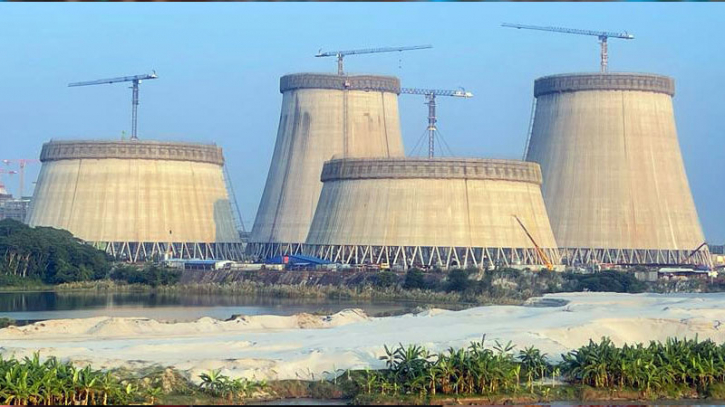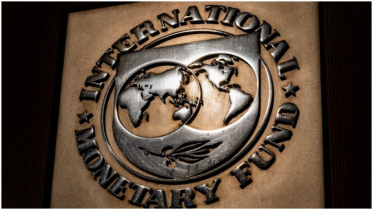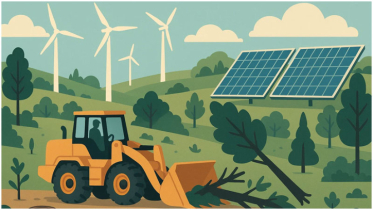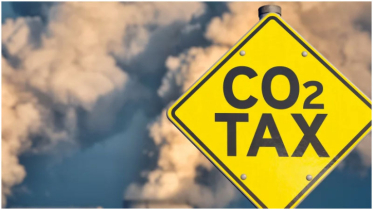Current affairs: On the trilateral electricity power plays between Bangladesh, Nepal, and India

Electricity in Bangladesh, or the crushing lack of it, is now news of daily concern and daily proof of poor planning exacerbated by the go-to excuse of global dislocation: Russia's war in Ukraine.
But even as several power plants that remain shut for lack of coal -- imported coal -- or operate at vastly reduced capacity (and grab digital views, TV eyeballs, and front-page headlines) a power supplement lies a tantalizing last-mile away. This is the often-ignored aspect of bilateral and trilateral power deals with Bangladesh and Nepal, and India-Nepal-Bangladesh (there's a trilateral Bhutan angle too, but more on that a little later).
This power connectivity is as crucial for regional well-being in general (and Bangladesh's well-being in particular) as are more accessible trade routes for overland and waterways access, preferential trade agreements, and enhanced connectivity to boost tech and finance.
This is despite every manner of power projects in play, including the nearly 2,200MW capacity work-in-progress Rooppur Nuclear Power Plant being constructed with the help of Russian funds and knowhow; and the Meghnaghat combined-cycle power plant driven by India's Reliance Group, the first in a four-complex initiative that includes local and American business interests and would add 3,000MW to Bangladesh's capacity and output. A massive LNG storage farm near Chittagong would feed the Meghnaghat plants.
Bangladesh's stated intention is to achieve 40 Gigawatt (or 40,000MW) of installed capacity by 2030; and a little over 60 Gigawatt (60,000MW) of installed capacity in a decade more, using all manner of input ranging from fossil fuels to an increasing proportion of renewable energy.
Even so, the country's frenetic growth to secure its socio-economic momentum will require far more energy. That's where cross-border connectivity comes in.
Cross-border electricity now comes from India. Bangladesh purchases 1,100MW of electricity from plants in West Bengal and Tripura. If all goes well, power from the brand new Adani Group-owned power plant in Jharkhand -- blueprinted to cater to Bangladesh -- should soon scale up from the 700MW it began supplying in April to 1,500MW.
But with India's own burgeoning power needs -- designed to increasingly depend on renewable or green energy -- Bangladesh-specific projects will be limited. This places Nepal (and Bhutan), with its vast hydropower potential which it actively wishes to tap as an exportable resource to shore up its own development, as the win-win ticket.
During a visit to New Delhi in early June by Nepal's Prime Minister Pushpa Kamal Dahal, Indian premier Narendra Modi, in a flourish, promised to increase India's current offtake of 450MW of Nepal-made power to 10,000MW within a decade. There would still be plenty in Nepal's inventory for Bangladesh.
Indeed, Nepal has displayed remarkable savvy in leveraging electricity as a resource.
In May 2021, Nepal participated in what is called day-ahead trading for electricity through the privately-managed Indian Energy Exchange (IEX). It has since profitably sold power through competitive bidding via IEX. By mid-2022 this exceeded 360MW sourced from several Nepal-based hydro projects.
Here is a glimpse of the future. A February 2023 report by AIDIA, a Kathmandu-based think-tank, quoted government sources to place Nepal's installed capacity in mid-2022 at a little over 2,200MW. It exceeds demand, making Nepal a rare power-surplus country in the region -- alongside Bhutan.
Nepal's generation capacity is expected to increase more than three-fold by 2025, mostly through commissioning of hydropower projects in this largely mountainous country. There will literally be a flood and it will go far beyond that year. As of 2022, Nepal's government had approved feasibility-study licenses for 16,000MW of hydropower projects ranging from micro to mega; and 217 projects totalling capacities in excess of 8,300MW had been given licenses to generate electricity. Naxa, a Nepali Geo-ICT consultancy firm, displays in its hydropower portal (accessed by this columnist on June 11) 311 projects in the survey stage, 180 under construction, and 81 as being operational.
Some estimates peg Nepal's “economically viable” hydropower potential at a staggering 43,000MW.
Bangladesh naturally wants to tap into this frenzied Nepali expansion. But it cannot do so without India, because it needs Indian territory and transmission lines in India to ferry electricity across from Nepal to India. At its narrowest, a tantalizing 20-22km stretch of India, the so-called Siliguri corridor, separates south-eastern Nepal from north-western Bangladesh.
Beyond this theoretical strip of destiny, there needs to be last-mile applications in which both Nepal and Bangladesh need to ensure they have robust transmission infrastructure in place in their respective transfer corridors, to literally transform, so to speak, that leap of faith from an empty promise to productive connectivity.
Nepal and Bangladesh have begun to push hard for this -- and so have private sector players in India.
India's GMR group has a 900MW work-in-progress hydropower project, GMR Upper Karnali Hydropower Ltd, in west-central Nepal. The project's deliverables are listed by GMR in this order:
“Prestigious 900MW project is under advanced stage of development
“Export-oriented project with power to be supplied to India and Bangladesh
“Project will be connected with Indian grid through dedicated transmission lines, which will be developed by GMR Energy, through Nepal based subsidiary”
GMR expects to export 500MW of this to Bangladesh. Besides networking that is affected by a corporate entity, Nepal and Bangladesh are pushing hell-for-leather to make this connectivity work.
A high-level bilateral meeting between Bangladeshi and Nepali officials and technocrats took place in Dhaka in mid-May to thrash out these matters. A decision was reached to request India to agree to an ongoing trial-transmission, as it were, of between 40-50MW using existing transmission infrastructure of the three countries -- somewhat hampered by Nepal's low-capacity transmission set-up in Anarmari in its eastern Jhapa district (Dahal's early-June visit to New Delhi has evidently clinched New Delhi's okay, as Dahal claimed upon his return to Kathmandu).
Meanwhile, the Nepal Electricity Authority has proposed two “dedicated” high-capacity transmission routes to formalize the electricity connectivity between Nepal and Bangladesh. One route, from Anarmari to Panchagarh in Bangladesh, would need to traverse 24km of Indian territory. A second, longer route from Anarmari to Thakurgaon, expects an Indian transit of 33km. Nepal is planning to rope in the World Bank for feasibility studies and finance for these transmission lines.
From my discussions with senior Bhutan government officials during a visit to that country in late May, I gathered Bhutan (which is also eyeing electricity exports to Bangladesh) is watching these developments very closely.
Transshipment of Indian goods via Bangladesh is a productive reality today. India has offered Indian ports and railways for Bangladesh's “third-country” exports to Nepal and Bhutan. This is all either fait accompli or work-in-progress.
Electricity connectivity follows from these other layers of connectivity. Bangladesh, Nepal, and Bhutan see it. India needs to as well, to collectively secure positive futures for South Asia.
Source: Dhaka Tribune
.png)




